Welcome
WELCOME to issue 21 of NA News. For 10 years we've been bringing you news of research, patients, therapies and developments in the NA Advocacy, the only organization dedicated to supporting the global community of individuals touched by neuroacanthocytosis. As many of our readers know, we fund research as well as reporting on it, and this year we are excited to be on the verge of our most ambitious ever call for research proposals. For that reason our Big Give in December needs your support now more than ever -- we explain more below in this issue. Also in this issue we will look at patient news, report the latest from NA researchers, and encourage patients to visit rare connect to communicate with new patient Yolanda Terbit in Spain. Visit us on the Web or on Twitter at @NAadvocacy, on Facebook and on Linkedin.
Turkey meeting provides opportunity for consultation
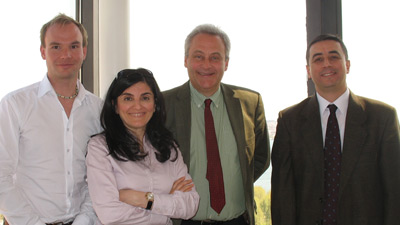
ADRIAN Danek and Benedikt Bader were in Istanbul as Erasmus teaching staff for two weeks in the spring. They taught a course in brain anatomy and were happy to find an opportunity to meet with Zuhal Yapici in order to clarify some issues concerning data that was needed to complement the information on patient characteristics that were needed to finish up EMINA-1 research reports on red cell membrane findings prepared by the groups in Vienna and Nijmegen.
Save the date: the Big Give makes a big difference to NA on 5 December
 THE BIG GIVE plays an important part in our search to understand and treat NA, and this year we're asking all our supporters to make an extra effort to save the date: log on at 10AM GMT any day between the 5th and 18 December, and you can seize a rare chance to double your donation. The NA Advocacy will make its largest ever call for new research projects proposals in 2014, and the Big Give has never been more vital to our success. THE BIG GIVE plays an important part in our search to understand and treat NA, and this year we're asking all our supporters to make an extra effort to save the date: log on at 10AM GMT any day between the 5th and 18 December, and you can seize a rare chance to double your donation. The NA Advocacy will make its largest ever call for new research projects proposals in 2014, and the Big Give has never been more vital to our success.
Read more»
Italian now available on naadvocacy.org
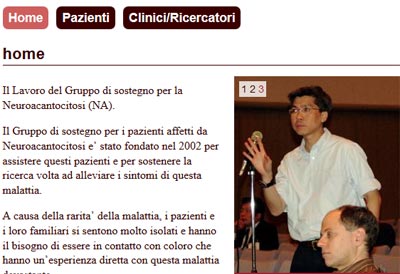
NEW Italian translations are available on the website; the top three tabs can be read and soon the other tabs will send you to new Italian translations. As a reminder, the best way for patients to "meet" one another is to click on the "Patients" tab on the right column and be automatically connected to the RareConnect site where, after joining the neuroacanthocytosis group, they can view other patient posts. The more people who use this site the more we will be able spread the word about NA. And if you need any messages translated to any of the five European languages you can request that it be done. Volunteers with language skills would be greatly appreciated!
The Parry fundraising walk at Hawarden marks its 20th year
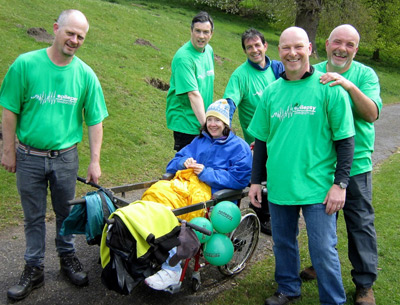
ON MAY 11 the North Wales village of Hawarden turned out for the 20th year to pay tribute to Sean, David and Mark, the children of Gill and Gordon Parry who had epilepsy and chorea-acanthocytosis. The Gladstone family again opened their large estate for the over 100 sponsored walkers who walked the 2 plus miles through a spring-flowered trail on a beautiful morning with a few showers. This has been a well-organized and enjoyable walk into fragrant woods and countryside that is seldom open except for these walks.
Alex Irvine again had the luxury of being carried by friends of Mark and David in a wheelchair improvised to be a sedan-chair. Later, many gathered to exchange memories and quench their thirst in the Glynne, a newly reopened local pub.The walkers each organized friends to sponsor their effort that together raised £4,500 for the Advocacy and the Epilepsy Research foundation. This money is much needed to continue and expand the research into these devastating diseases.
PATIENT UPDATE
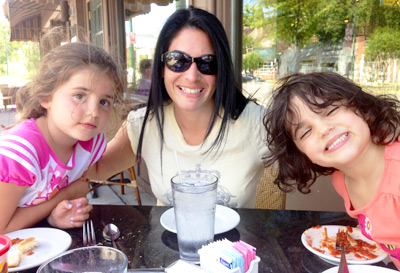 Elyse Lakritz Weinbaum with daughters Emily and Ilana Elyse Lakritz Weinbaum with daughters Emily and Ilana
UPDATES this issue from Alex Irvine in England, Mardi Williams in Australia, Ana-Maria Palomo-Argenta in Madrid and Elyse Lakritz Weinbaum in Michigan. We are also pleased to meet Yolanda Tebar from Spain, who has written to the Patients page on Rare Connect and is keen to correspond with other NA patients.
Read more»
RESEARCH UPDATE
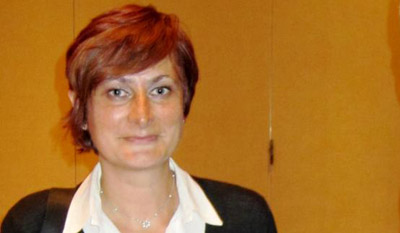
THIS issue we hear updates from Dr. Lucia de Franceschi in Verona; Dr. Antonio Velayos-Baeza at the University of Oxford; Dr. Florian Wegner at the Hannover Medical School and Aaron Neiman at Stony Brook University New York.
Read more»
|
|